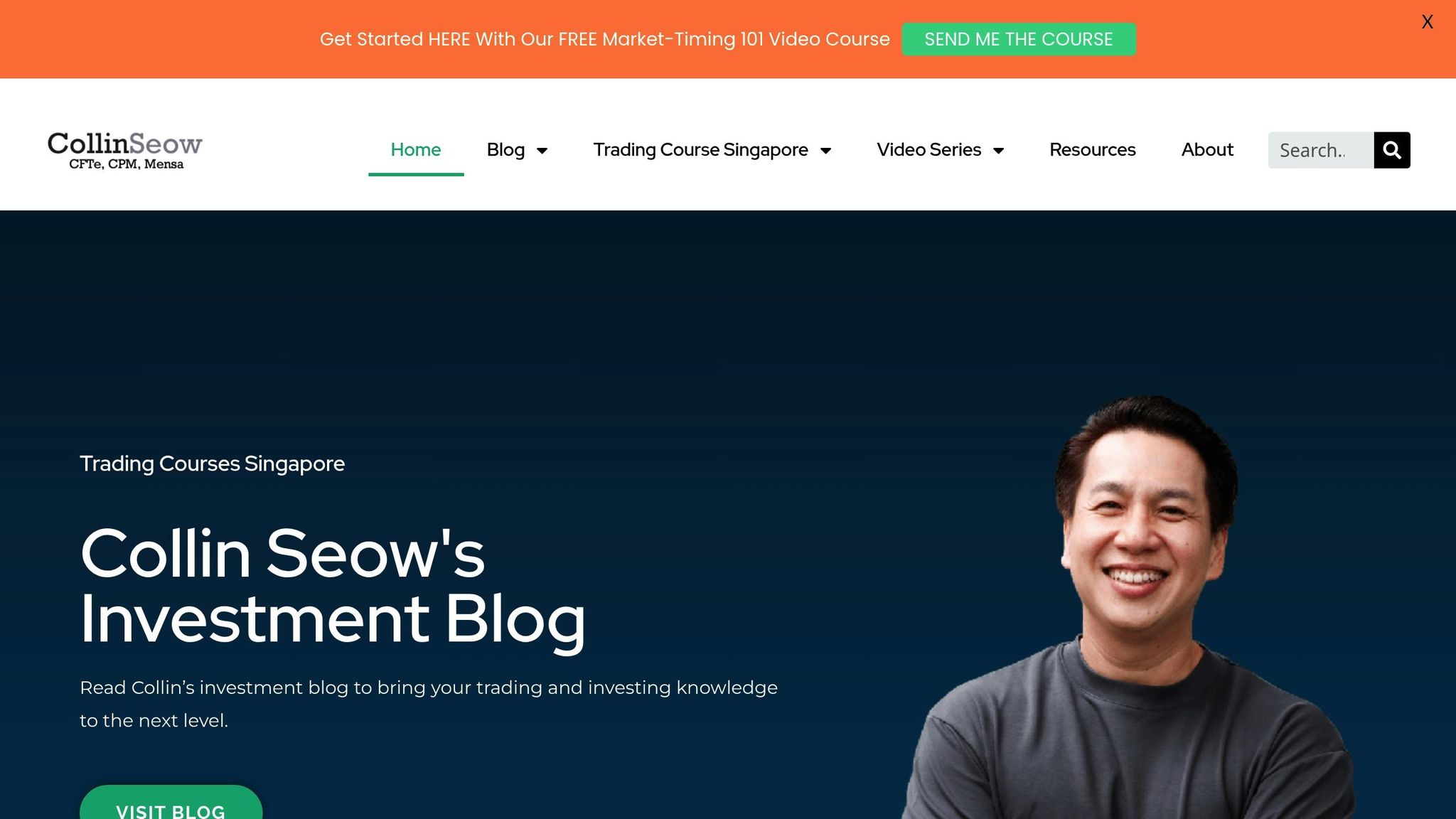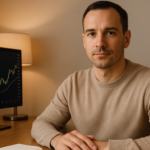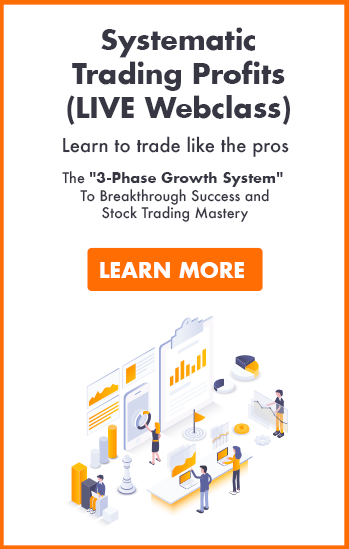Trading success isn’t just about technical skills – it’s about managing emotions. Research shows that 85% of trading success depends on psychology, while technical analysis contributes only 15%. Without emotional control, traders risk impulsive decisions like panic selling, revenge trading, or abandoning strategies, which can lead to significant losses.
Here’s what emotional resilience in trading means and how you can build it:
- What is emotional resilience? It’s the ability to stay calm under pressure, manage stress, and stick to your trading plan despite market volatility or losses.
- Why is it important? Emotional control prevents costly mistakes like overtrading or ignoring risk management, helping you achieve consistent results.
- Challenges for Singapore traders: Managing trades across time zones, dealing with SGD currency fluctuations, and balancing work with trading increase stress levels.
- Practical tools to build resilience: Use mindfulness techniques, track emotions in a trading journal, and create daily trading routines with pre-trade checklists and post-trade reviews.
- Risk management strategies: Set strict stop-losses, limit position sizes, and avoid high leverage to reduce emotional strain.
Key takeaway: Emotional resilience is a skill you can cultivate through discipline, structured routines, and risk management. By staying composed and sticking to your plan, you can navigate market volatility and achieve long-term trading success.
What Emotional Resilience Means for Traders
Defining Emotional Resilience
Emotional resilience in trading is all about staying composed under pressure. It’s the ability to handle stress and unexpected setbacks while keeping your focus and discipline intact. Resilient traders are not immune to emotions like fear, greed, or anxiety – instead, they recognise these triggers and respond calmly, sticking to their trading plans even during rapid market changes.
Resilience doesn’t mean being emotionless; it’s about accepting that losses and setbacks are part of the trading journey. They don’t define you or your abilities. For example, during volatile periods – like when inflation reports shake up markets in Singapore – resilient traders rely on their systematic approach to navigate the chaos without losing their footing.
This mental strength is the backbone of emotional stability, which is key to making rational decisions in the high-stakes world of trading.
Why Traders Need Emotional Stability
When money is on the line, emotional stability can make or break your trading performance. Traders who can control their emotions are less likely to make impulsive decisions. This reduces costly mistakes and helps build consistency over time.
Without emotional control, traders might double down on losing trades or prematurely exit profitable ones, driven by fear or greed. Emotional stability, on the other hand, allows traders to assess each trade objectively, protect their capital during downturns, and stay focused on long-term strategies.
It also helps traders maintain perspective during both winning and losing streaks. A single trade is just one data point in a larger system, not a measure of overall success or failure.
This kind of stability is particularly vital when navigating the unique challenges of trading in Singapore.
Trading Challenges in Singapore
In Singapore, the fast-paced and complex trading environment demands even greater emotional resilience and stability. Local traders often face intense pressure due to rapidly shifting market conditions and the intricacies of managing SGD positions. Many also trade across multiple currencies, such as SGD, USD, and others in the region. Exchange rate fluctuations can directly affect profitability, making it essential to focus on what’s within your control.
The cultural emphasis on discipline and long-term planning in Singapore can be a strength, helping traders stay grounded. However, balancing these values with the high expectations to perform – especially for those juggling trading with full-time jobs – can add significant stress.
Time zones pose another challenge. Singapore-based traders often track overseas markets, like the US, which may require quick decisions during odd hours or holding positions overnight. The uncertainty of how markets will open the next day can test even the most experienced traders.
To address these challenges, educational resources such as those from the Collin Seow Trading Academy provide tailored strategies. They teach systematic approaches to trading and techniques for managing emotions, specifically designed for Singapore’s trading environment. By understanding these unique difficulties, traders can respond constructively and avoid viewing challenges as personal failures.
Emotional Problems That Hurt Trading Performance
Main Emotional Triggers for Traders
Trading can stir up intense emotions that often disrupt well-laid strategies. Take fear, for instance – it makes traders second-guess themselves, causing them to hesitate or exit profitable trades too early. This not only reduces potential gains but also shakes their confidence.
On the flip side, greed can push traders to hold onto positions longer than they should, ignoring stop-loss levels and taking on unnecessary risks. Then there’s frustration, which tends to creep in after a streak of losses. This emotion can lead to impulsive decisions, like abandoning strategies that have been proven to work. Overconfidence, often born from a series of wins, is another culprit. It tempts traders to increase their position sizes without properly assessing risks, steering them away from their established rules. And let’s not forget FOMO (fear of missing out) – a powerful trigger that drives traders to jump into trades impulsively, especially when they see others profiting in fast-paced markets.
For Singapore traders working with portfolios ranging from S$10,000 to S$100,000, these emotional triggers can lead to steep financial losses or missed opportunities. The challenges are often magnified by factors like trading across different time zones, disrupted sleep patterns, and juggling trading with demanding work schedules.
These emotional triggers often pave the way for reactive behaviours that hinder trading performance during market stress.
How Traders React to Losses and Market Swings
When emotions take over, traders often react in ways that worsen their situation. One common response is revenge trading, where they try to recoup losses quickly through impulsive trades. This creates a vicious cycle – each trade becomes riskier, leading to even greater losses.
Panic selling is another frequent reaction. During volatile market conditions, traders may exit positions prematurely, locking in losses they might have avoided with more patience. For instance, sudden dips in the Straits Times Index (STI) can trigger emotional decisions that override pre-planned strategies.
Perhaps the most harmful reaction is when traders abandon their proven strategies after experiencing a series of losses. Instead of giving their approach time to work, they switch to new systems, unable to accept losses as a normal part of trading. This lack of discipline often leads to inconsistent results. Sticking to a systematic strategy is crucial to counter these emotional pitfalls.
Market volatility only amplifies these reactions. Rapid price swings and uncertainty can lead traders to make spur-of-the-moment decisions without following their rules. Common mistakes include increasing position sizes due to overconfidence, neglecting risk controls like stop-losses, and trading without a clear plan.
| Emotion | Impact on Trading | Outcome |
|---|---|---|
| Fear | Missed opportunities, premature exits | Reduced profits, hesitation |
| Greed | Oversized positions, ignored stop-losses | Large losses, blown accounts |
| Frustration | Impulsive decisions, rule abandonment | Inconsistent results |
| Overconfidence | Excessive risk-taking, rule deviation | Unexpected large losses |
| FOMO | Poor timing, inadequate analysis | Bad entries, quick losses |
Even minor deviations from trading rules can snowball into significant account damage. The market may not immediately punish emotional errors, which can falsely reinforce bad habits. This underscores the importance of robust risk management.
Interestingly, even top traders typically have win rates of just 40–60%. Their success isn’t rooted in superior market analysis but in their ability to manage emotions and stick to their rules. Emotional discipline, more than technical skills, is what separates successful traders from those who struggle.
How to Build Emotional Resilience
Building emotional resilience in trading isn’t about shutting off your emotions; it’s about learning to manage them effectively. Research shows that psychology and emotional control often play a more critical role in trading success than technical analysis. By adopting practical techniques, you can shift from reactive decisions to more strategic, well-thought-out actions. Here’s how you can integrate this resilience into your trading routine.
Mindfulness and Stress Control Methods
Mindfulness can help you stay grounded during market turbulence. Starting your trading day with just 10–15 minutes of mindfulness meditation before the markets open can calm your mind and provide a steady foundation for making decisions. This simple habit can ease the anxiety that often leads to impulsive trades.
Deep breathing exercises are another effective tool, especially during volatile moments. When the Straits Times Index (STI) takes a sharp turn or your trades move against you, slow and deliberate breaths can help you stay focused. This is particularly useful for Singapore traders juggling trades across multiple time zones, where disrupted sleep can amplify emotional reactions.
Your body often signals stress before your mind catches up. Pay attention to physical signs like a racing heart or tense shoulders. These indicators can alert you that emotions are starting to take over. When you notice these signs, step away from your trading desk. A short break can help you regain perspective and approach the situation with a clearer mind.
It’s also crucial to recognise when you’re not in the right mental state to trade. If market conditions are challenging or you’re feeling emotionally charged, taking a step back can save you from decisions clouded by emotion.
Once you’ve managed your immediate stress, make a habit of documenting these experiences. Identifying patterns in your reactions can be a game-changer.
Tracking Emotions with Trading Journals
A trading journal isn’t just for recording numbers; it’s a powerful tool for understanding your emotional tendencies. Alongside noting entry and exit points, jot down how you felt before, during, and after each trade. This can uncover patterns you might otherwise overlook – like a tendency to chase losses after a bad streak or overconfidence after a few wins.
For Singapore traders, this practice can reveal how late-night trading sessions, often necessary to follow international markets, might impact emotional control and lead to poor outcomes. By consistently tracking your emotional state, you’ll start noticing triggers that influence your decisions.
Regularly reviewing your journal entries can sharpen your self-awareness. For example, you might find that frustration after consecutive losses often leads to revenge trading or that rushed decisions during lunch breaks result in mistakes. Recognising these patterns allows you to adjust your approach and build a more balanced trading mindset.
Incorporating structured daily routines can further strengthen your emotional discipline.
Creating Daily Trading Routines
A well-structured routine can act as a safety net, keeping emotions in check throughout the trading day. By embedding specific checkpoints into your routine, you can reduce the emotional sway over your decisions.
Start with a pre-market review to set the tone for the day. This includes checking overnight news that could affect SGX-listed stocks, reviewing your watchlist, and assessing your mental readiness. If you’re dealing with external stress, acknowledge it and adjust your approach accordingly.
Before placing any trades, use a pre-trade checklist to ensure your decisions are grounded in strategy. Confirm that the stock meets your technical and risk criteria, verify that your position size aligns with your risk management rules, and double-check that your stop-loss level is set appropriately in Singapore dollar terms.
When things don’t go as planned, a mandatory cool-off period can help you avoid emotional reactions like revenge trading. For instance, taking a 15-minute break after a losing trade can prevent frustration from snowballing into bigger mistakes.
End your trading day with a post-trade review. Reflect on your performance, both technically and emotionally. Celebrate small wins to maintain motivation and focus on your long-term goals.
Here’s how these elements can look in practice:
| Routine Element | Purpose | Singapore-Specific Implementation |
|---|---|---|
| Pre-market review | Emotional preparation | Check STI futures and review SGX announcements |
| Pre-trade checklist | Prevent impulsive decisions | Confirm S$ position sizing and verify stop-loss levels |
| Cool-off periods | Manage anger/frustration | 15-minute break after losses; step away from screens |
| Post-trade review | Build self-awareness | Journal emotions and decisions in S$ terms |
For Singapore traders juggling trading with demanding careers, these routines can be especially helpful in preventing external stress from spilling into trading decisions. By combining emotional control with a structured approach, you’ll be better equipped to navigate the chaos of the markets while staying focused on your long-term strategy.
Master Systematic Trading with Collin Seow
Learn proven trading strategies, improve your market timing, and achieve financial success with our expert-led courses and resources.
Risk Management for Emotional Control
Managing risk is about more than just protecting your trading capital – it’s also about keeping your emotions in check. By setting clear loss limits and sticking to them, you create a safety net that shields you from the ups and downs of the market. This approach helps you stay focused and prevents emotional reactions from taking over your strategy.
In fact, effective risk management is a cornerstone of building the mental toughness needed for sustained trading success.
“Success in trading is not just about making decisions; it’s about making informed decisions. Collin Seow’s trading methodology stands out through its systematic and strategic approach, particularly in addressing the critical aspects of trading: what to buy, when to buy, and how much to buy. This methodology is crafted not just for trading but for trading wisely, with a focus on strong stocks, optimal timing, and effective risk management.”
Setting Stop-Losses and Position Sizes
One of the best ways to keep your emotions in check is by knowing your maximum potential loss before you even place a trade. Setting stop-loss orders and determining position sizes based on a fixed percentage of your capital – often 1–2% – automates risk management and reduces the chance of making rash decisions.
For instance, if you have S$50,000 in your trading account and decide to risk S$1,000 per trade, you could endure 50 consecutive losses before wiping out your account. This kind of certainty can help you sleep easier, especially when holding positions overnight in volatile SGX stocks.
Stop-loss orders work seamlessly with position sizing to create predictable outcomes. Instead of clinging to the hope that a losing trade might recover, your stop-loss ensures losses are cut early, preventing small setbacks from snowballing into major problems.
The Collin Seow Trading Academy teaches traders to calculate position sizes based on their risk tolerance, ensuring they manage their exposure effectively. For those trading international markets, it’s especially important to account for currency fluctuations. A S$500 stop-loss on a US stock might seem reasonable, but shifts in exchange rates could unexpectedly increase your real loss in SGD terms.
Research shows that traders who consistently apply stop-loss orders and position sizing rules are up to 40% less likely to suffer large, emotionally-driven losses compared to those who don’t. These practices not only protect your capital but also help you maintain a clear head during turbulent markets.
Sticking to Your Trading Plan
Your trading plan is your lifeline when emotions run high. Picture this: the Straits Times Index plunges 3% in a single session, or your favourite stock nosedives on unexpected news. In moments like these, your instincts might urge you to abandon your strategy. But sticking to your plan is exactly what will save you.
A well-structured trading plan removes the guesswork during stressful situations. Instead of agonising over whether to hold or sell a losing position, you simply follow the rules you set when you were calm and objective. This discipline prevents fear from turning small losses into big ones and stops greed from eating away at your profits.
During Singapore’s trading hours, sudden regional news can trigger market volatility. Having clear entry and exit rules helps you act methodically rather than impulsively. Your plan should outline when to add to winning positions, when to take profits, and, most importantly, when to cut losses.
The key is treating your plan as non-negotiable. Over 70% of retail traders who don’t follow a structured risk management plan report higher stress levels and more frequent emotional trading mistakes. On the other hand, traders who stick to their plans often experience steadier results and better emotional balance over time.
Avoiding Too Much Leverage and Risk
Leverage can be a double-edged sword. While it can amplify your returns, it also magnifies your losses – and your emotional reactions. High leverage is one of the quickest ways to not only drain your trading account but also erode your mental stability.
Take this example: if you’re leveraged 10:1 on a volatile SGX stock, a 5% move against you could wipe out half your position. This kind of pressure often leads to panic, which in turn results in poor decisions and compounded losses. Over 80% of highly leveraged retail accounts lose money within their first year, largely because traders can’t handle the stress of amplified losses.
A more cautious approach – keeping leverage at no more than 2:1 for most retail traders – helps you stay calm by ensuring that regular market fluctuations don’t threaten your account. While this approach might feel slow, it allows you to focus on improving your trading skills without constantly worrying about margin calls.
| Risk Level | Emotional Impact | Typical Outcome |
|---|---|---|
| Conservative (1-2% risk per trade) | Low stress, clear thinking | Consistent long-term growth |
| Moderate (3-5% risk per trade) | Manageable stress, occasional anxiety | Volatile but sustainable results |
| Aggressive (10%+ risk per trade) | High stress, frequent panic | Large gains followed by devastating losses |
Using Education to Build Long-Term Resilience
Building emotional resilience isn’t something that happens overnight – it’s a skill that grows through consistent learning and practice. When it comes to trading, your psychological strength improves as you deepen your understanding of both the technical and emotional sides of the markets. The most successful traders see education not as a one-off task but as a lifelong journey.
By learning to analyse market behaviour and recognising your own emotional patterns, you can make rational decisions even under pressure. This understanding acts as a stabilising force during volatile periods, helping you steer clear of costly mistakes driven by fear or greed. Just like risk management, ongoing education strengthens your discipline and helps you maintain emotional balance when markets are unpredictable.
Why Continuous Learning Matters
Continuous learning is key to staying agile in shifting market conditions. It also equips you with the psychological tools needed to manage stress and recover from setbacks. Instead of seeing losses as personal failures, well-informed traders view them as opportunities to refine their strategies and grow.
When you consistently update your knowledge, you gain the ability to identify emotional triggers before they disrupt your trading plans. For instance, understanding the nuances of the SGX and other local market trends prepares you mentally for sudden shifts, so you’re not caught off guard.
“His approach is not just about making successful trades but about cultivating a disciplined, informed, and strategic mindset among his students.”
Structured learning also reduces the tendency to act on impulse. Following a systematic method – knowing what to buy, when to buy, and how much to invest – helps you avoid second-guessing yourself during stressful moments. Research shows that traders who regularly engage in self-reflection and education are more likely to achieve consistent success over time.
Collin Seow Trading Academy Resources

Practical tools play a big role in fostering the disciplined mindset needed to navigate volatile markets. Collin Seow Trading Academy provides a range of educational resources designed to enhance both systematic trading skills and emotional discipline. These include the Market Timing 101 e-course, the Systematic Trading Profits live webclass, and the Systematic Trader v.2 book.
The Market Timing 101 e-course simplifies the process of buying and selling stocks by offering a clear, rule-based strategy. This free course helps traders minimise emotional decision-making by focusing on precise, actionable guidelines.
The Systematic Trading Profits live webclass introduces a “3-Phase Growth System” for mastering stock trading. By breaking down complex decisions into manageable steps, this approach promotes discipline and consistency.
The Systematic Trader v.2 book provides strategies for creating an “Options Income Fortress” and includes methods for trading cryptocurrencies. It highlights how systematic approaches can be applied across different asset types, helping traders maintain emotional steadiness regardless of market conditions.
Additionally, the academy offers free learning videos that cover trading trends, practical tips, and market outlooks. These resources provide ongoing education that keeps traders informed without overwhelming them.
A standout feature of these tools is their focus on systematic methods that reduce impulsive decisions, especially during volatile market periods. By following clear rules and prioritising risk management, traders can avoid the emotional toll of over-leveraging.
Community Support and Mentorship Benefits
Trading can be a lonely endeavour, especially during periods of loss or lapses in discipline. This isolation often magnifies emotional challenges, making it harder to recover from setbacks. That’s where community support and mentorship come in – they provide the accountability and perspective needed to maintain emotional stability.
Being part of a trading community allows you to share challenges, gain valuable feedback, and learn from others’ experiences. Knowing that other traders face similar struggles can normalise your own challenges and reduce feelings of self-doubt.
Mentorship offers tailored guidance during tough times. A mentor can help you identify emotional patterns you might overlook and provide objective advice when emotions run high. They also encourage self-reflection after losses, which is crucial for maintaining emotional resilience.
“Collin’s mission extends beyond the trading floor; he aims to foster a community of systematic traders through CollinSeow.com, empowering his students with the tools and insights needed for responsible investing and enduring success.”
At the Collin Seow Trading Academy, the focus extends beyond technical skills. The academy fosters a supportive community where traders can develop the disciplined mindset needed for long-term success. This environment not only reinforces systematic trading methods but also turns setbacks into valuable learning experiences. Regular interactions with mentors and peers help transform challenges into opportunities, strengthening emotional resilience over time.
Building Emotional Resilience for Trading Success
To succeed in trading, emotional resilience is essential. It’s about crafting a framework that blends emotional control, systematic risk management, and continuous learning – a combination that’s especially vital in Singapore’s highly competitive trading scene.
By pairing disciplined risk management with ongoing education, you create a stable foundation for emotional strength. Research highlights that traders who maintain emotional discipline are three times more likely to stay profitable over time compared to those who make impulsive decisions. This isn’t luck – it’s the outcome of treating trading as both a technical skill and a psychological endeavour.
Emotional resilience doesn’t appear overnight; it builds through consistent, disciplined actions. Every time you respect a stop-loss or resist the urge to overtrade, you’re reinforcing your mental strength. These small, deliberate actions accumulate, paving the way for long-term success. This approach ties seamlessly with the systematic strategies discussed earlier.
The Integration of Systems and Psychology
Systematic trading strategies naturally support emotional resilience by eliminating guesswork. When you follow a set of clear, rule-based decisions, you’re less likely to second-guess yourself, even when markets become unpredictable. This structure acts as an emotional anchor, keeping you steady when fear or greed threatens to take over.
Position sizing plays a key role here. Knowing that no single trade can significantly harm your account allows you to approach opportunities with clarity and confidence instead of anxiety.
Interestingly, research shows that psychological discipline often outweighs technical analysis. This underscores why developing emotional resilience is just as critical as mastering chart patterns or market indicators.
Practical Implementation for Singapore Traders
Building emotional resilience isn’t just a universal concept – it’s particularly important for traders in Singapore. With access to global markets across different time zones, local traders face unique challenges such as disrupted sleep schedules, currency fluctuations, and the pressures of competing in a world-class financial hub. These factors make cultivating emotional strength even more crucial.
A practical approach for Singapore traders involves integrating mindfulness practices, detailed trade journaling, and structured risk management into a daily routine. Starting each trading day with a clear mind, tracking your emotional state during sessions, and adhering to pre-set risk limits are habits that foster long-term stability.
Adopting a realistic mindset also helps. Accepting that 40-60% of trades might result in losses reduces stress levels by 45% during market downturns. Shifting your focus from perfectionism to a process-oriented approach is a game-changer for emotional resilience.
Resources like those offered by Collin Seow Trading Academy provide valuable support. Tools such as the Market Timing 101 e-course, Systematic Trading Profits webclass, and The Systematic Trader v.2 book emphasise rule-based strategies that minimise emotional decision-making. Beyond technical knowledge, these resources help traders cultivate the discipline needed to navigate volatile markets.
Being part of a trading community also makes a difference. Engaging with mentors and peers transforms setbacks into learning opportunities rather than personal failures. This shared accountability and perspective can help you maintain emotional balance during tough times.
To thrive in Singapore’s fast-paced trading environment, focus on building systems for discipline, developing habits that support clear decision-making, and tapping into supportive resources. With this foundation, you’ll be better equipped to stay calm, focused, and profitable, no matter how the markets behave.
FAQs
What are some practical ways for Singapore traders to manage the stress of trading across different time zones?
Trading across different time zones can be tough, but with the right approach, traders in Singapore can stay focused and manage stress effectively.
Start by creating a structured routine that fits your trading hours. Make sure to prioritise rest and maintain a healthy work-life balance. Quality sleep is especially important if you’re trading during unusual hours – it sharpens your decision-making and helps you handle stress better.
To ease the pressure of constant monitoring, you might want to use automated trading tools or set alerts for critical market events. This way, you can concentrate on the most important trades without feeling overwhelmed. Adding regular exercise, mindfulness techniques, or even short breaks into your schedule can also make a big difference in staying calm and focused, especially when markets get unpredictable.
If you’re looking for a more organised way to enhance your trading skills, platforms like Collin Seow Trading Academy offer courses and resources designed to help traders build emotional resilience and develop strategies for long-term success.
What mindfulness techniques can traders practise to build emotional resilience during market volatility?
Traders often face high-pressure situations, especially during market volatility. Incorporating mindfulness techniques into your routine can help you stay composed and focused.
One simple yet effective method is deep breathing exercises. Taking slow, controlled breaths for just a few minutes can ease stress and bring clarity to your thoughts. It’s a quick way to regain control when anxiety starts creeping in.
Another valuable tool is mindful journaling. By jotting down your emotions and thought patterns after each trade, you can spot recurring triggers and work on managing them better. Over time, this practice can lead to improved emotional awareness and control.
Finally, consider adding short meditation sessions to your day. Even 5–10 minutes of meditation can sharpen your focus and reduce the urge to make impulsive decisions.
These mindfulness practices not only build emotional resilience but also encourage more rational and thoughtful trading, even when the markets are unpredictable.
Why is it important to track your emotions in a trading journal for better discipline and performance?
Keeping track of your emotions in a trading journal can reveal patterns in your behaviour and decision-making process. Emotions like fear or overconfidence can significantly influence your trades. By recognising these emotional triggers, you can work on managing them better, which helps you maintain discipline and consistency in your trading approach.
A detailed journal also serves as a tool for reflection. It allows you to review past trades, pinpoint mistakes, and refine strategies that have proven effective. Over time, this habit strengthens your emotional resilience, a key trait for coping with losses and staying focused on achieving long-term trading goals.












